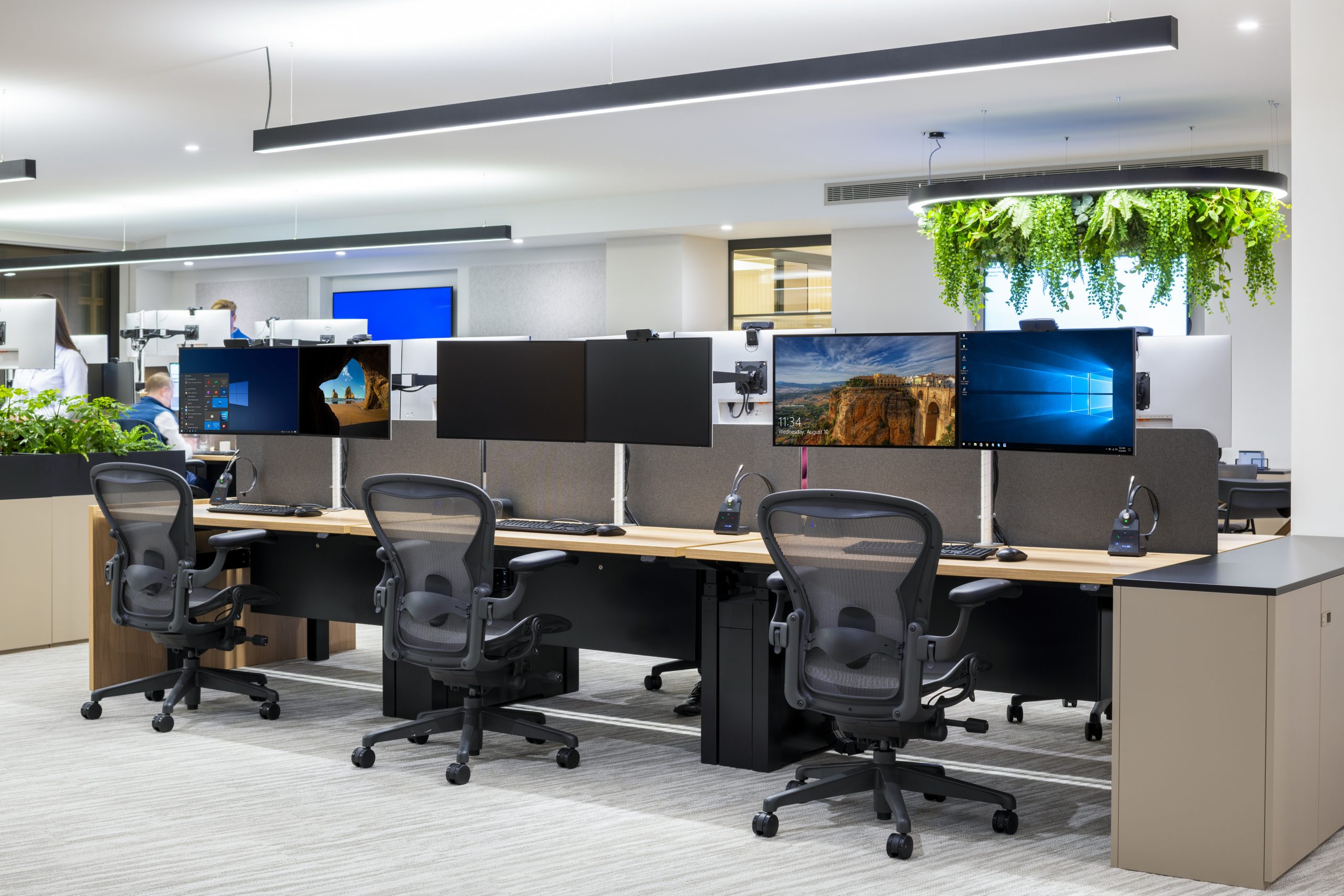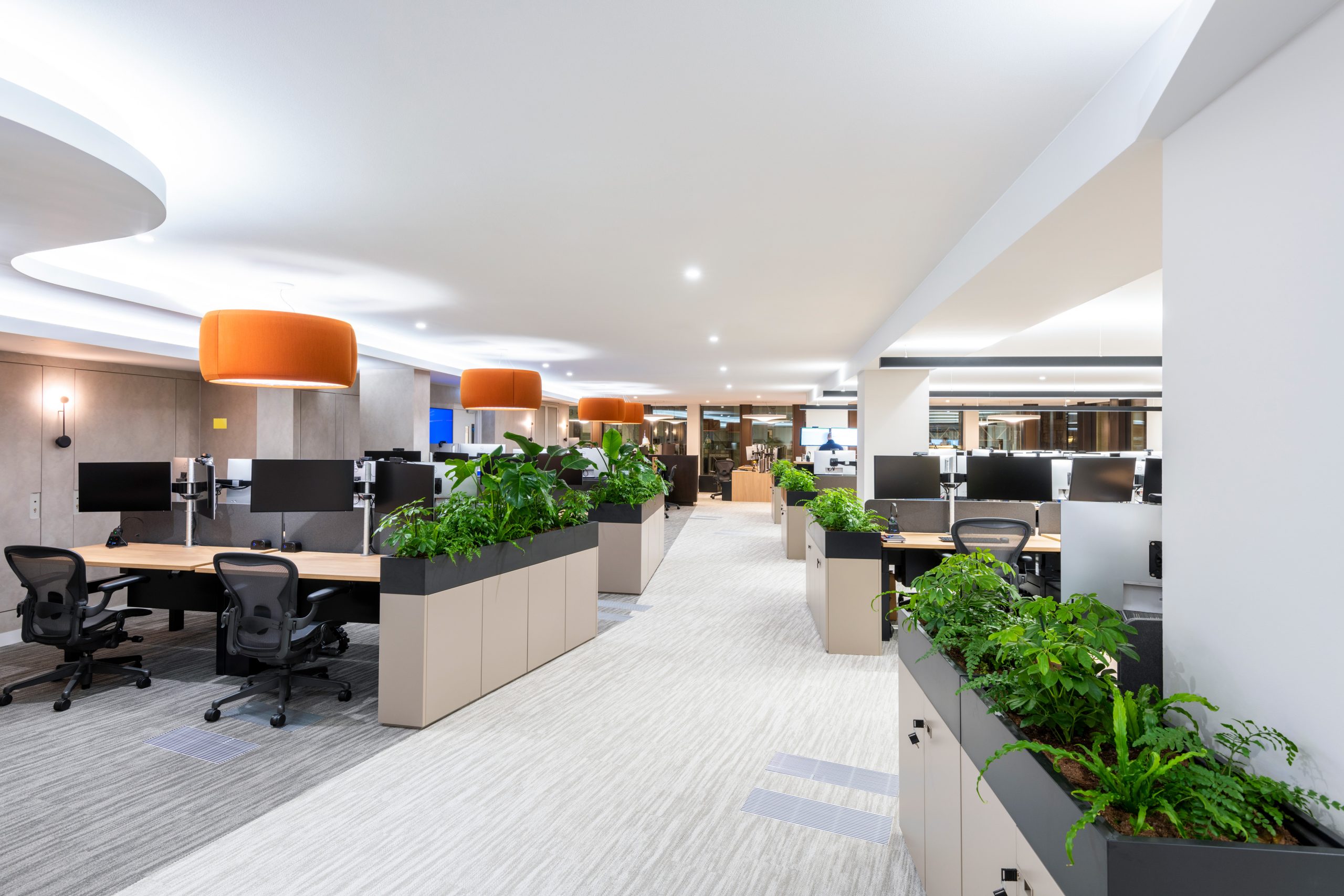 Ergonomics in Office Furniture: A Comprehensive Report for Workplace Decision-Makers
Ergonomics in Office Furniture: A Comprehensive Report for Workplace Decision-Makers
From chairs and desks to advanced sit–stand workstations and AI-powered seating, ergonomic design aims to reduce musculoskeletal strain, boost comfort, and enhance productivity. This comprehensive guide will draw on research, case studies, and best practices to help decision-makers create healthier, more efficient workspaces that support both well-being and performance.
By layering practical adjustments, cutting-edge technologies, and evidence-based workplace policies, you can foster an environment where comfort and productivity go hand in hand. Let’s explore the core concepts, applications, trends, health impacts, business benefits, and economic considerations shaping the future of office ergonomics.
Contents
- 1. What Is Ergonomics and Why It Matters in the Workplace
- 2. Ergonomics Applied to Office Furniture: Chairs, Desks, and Workstations
- 3. Current Trends and Innovations in Ergonomic Office Furniture
- 4. Health Impacts of Ergonomic vs. Non-Ergonomic Furniture
- 5. Effects on Productivity, Absenteeism, and Employee Satisfaction
- 6. Economic Considerations: ROI & Cost-Benefit Analysis
- 7. Comparison Table: Ergonomic vs. Non-Ergonomic Furniture
- 8. Conclusion & Next Steps
 1. What Is Ergonomics and Why It Matters in the Workplace
1. What Is Ergonomics and Why It Matters in the Workplace
Ergonomics is the science of designing work environments and tasks to fit the worker, rather than forcing workers to adapt to the job. In practice, it means arranging workplaces, tools, and furniture to accommodate human anatomy and movement. The goal is to improve comfort, safety, and efficiency. According to HSE, Ergonomics is the science concerned with the ‘fit’ between people and their work. It puts people first, taking account of their capabilities and limitations. Ergonomics aims to make sure that tasks, equipment, information and the environment fit each worker to ensure their safety, comfort and performance.”
Musculoskeletal disorders, such as back pain, tendonitis, and carpal tunnel syndrome, are a major cause of lost work time and injury in many industries. Long hours of sedentary desk work and poor postures contribute to chronic pain in the back, neck, shoulders, and wrists. Ergonomics in office settings aims to prevent these injuries by tailoring the workspace to the employee’s needs. This not only improves employee well-being but also boosts productivity, as comfortable and pain-free employees can focus better on their tasks.
Ergonomics transcends safety concerns; it is equally a productivity and quality strategy. A review of 250 case studies found that comprehensive ergonomics programs can increase productivity by about 25% on average while reducing errors and scrap by 67%. Companies that have adopted ergonomic practices have also reported lower employee turnover and absenteeism rates, with one large-scale analysis noting a 48% decrease in turnover and a 58% reduction in absenteeism following ergonomic improvements. In sum, ergonomics matters not only for keeping workers healthy and safe but also for fostering a more effective and engaged workforce.
 2. Ergonomics Applied to Office Furniture: Chairs, Desks, and Workstations
2. Ergonomics Applied to Office Furniture: Chairs, Desks, and Workstations
In modern offices, furniture is the primary interface between workers and their work. Ergonomic principles applied to office furniture ensure that chairs, desks, and workstations support the body in neutral, comfortable postures and accommodate a range of body sizes and work styles. Below we detail how ergonomics translates into better design for chairs, desks, and overall workstation layout:
Ergonomic Chairs
- Adjustability: Seat height, depth, backrest angle, and lumbar support should all be adjustable so feet rest flat on the floor, thighs are parallel to the ground, and the spine’s natural curve is maintained.
- Lumbar Support: Proper lumbar support prevents slouching and cushions pressure points, helping avert lower back pain and neck stiffness.
- Armrests & Mobility: Adjustable armrests keep shoulders relaxed; swivel and roll functions allow easy reach without twisting.
Research confirms that chairs with proper lumbar and seat support can significantly ease back, neck, and shoulder pain compared to ordinary chairs. Workers who sit in chairs tailored to their bodies report less discomfort and fatigue, enabling better concentration on work tasks. Training employees to adjust their chairs properly further enhances these benefits.
Ergonomic Desks and Workstations
- Desk Height & Sit-Stand Functionality: Desks should allow elbows to bend at roughly 90° when typing, keeping wrists straight. Sit-stand desks enable alternating between sitting and standing, reducing the strain of prolonged static postures.
- Monitor Placement: Screens should be at eye level and about an arm’s length away to prevent neck craning.
- Keyboard & Mouse Ergonomics: Ergonomic keyboards and mice keep wrists neutral and reduce repetitive strain risk; wrist rests can further support proper alignment.
A holistic ergonomic workstation arranges all components—chair, desk, monitor, keyboard—so the worker can maintain a healthy posture with minimal effort. Simple accessories like footrests and monitor arms help fine-tune setups for individual needs.
Illustrative Ergonomic Adjustments
Consider an employee preparing for a day of computer work: they adjust their chair so their feet rest flat, thighs parallel to the floor, and back fully supported. They set their sit-stand desk to elbow height, place the monitor directly ahead at eye level, and position the keyboard and mouse within easy reach. If necessary, they use a footrest and a monitor riser. These adjustments, though small, significantly reduce daily micro-stresses on the body and prevent fatigue over long hours.
 3. Current Trends and Innovations in Ergonomic Office Furniture
3. Current Trends and Innovations in Ergonomic Office Furniture
Office ergonomics is an evolving field, and recent years have seen a surge of innovation in furniture design aimed at improving worker well-being. Employers and furniture makers alike are responding to new research and workforce expectations for healthier, more adaptive workplaces. Key trends include:
1. Standing Desks and Sit-Stand Workstations
Height-adjustable standing desks have moved from niche to mainstream. Studies show that alternating between sitting and standing can reduce lower back pain by up to 54%, improve circulation, and boost energy levels. Motorised desks with memory presets simplify posture changes, while anti-fatigue mats in standing mode support prolonged use without discomfort.
2. Adaptive Seating and Active Chairs
Adaptive seating options like kneeling chairs, saddle stools, and balance-ball chairs encourage micro-movements and posture variation. Research has found they help maintain the spine’s natural curvature more effectively than static chairs, engaging core muscles and improving alertness. Many offices now offer a mix of dynamic seating and traditional ergonomic chairs to let employees choose what suits them best.
3. Smart Furniture with Sensors and AI
The cutting edge of ergonomics integrates IoT sensors and AI into desks and chairs. Smart standing desks can remind users to change posture, track sitting vs. standing time, and sync with wearable devices. AI-powered chairs detect slouching via pressure sensors and adjust lumbar support, tilt, or height automatically. Early case studies report up to 40% reductions in user-reported fatigue and significant decreases in back and neck pain.
4. Modular & Biophilic Designs
Modular sit-stand benching systems and mobile ergonomic desks allow rapid workspace reconfiguration for different tasks. Biophilic elements—like living walls or plant-loaded shelving—serve as natural acoustic buffers and enhance psychological comfort. Anti-fatigue mats, breathable mesh materials, and desk-mounted stretch coaches further merge ergonomics with wellness.
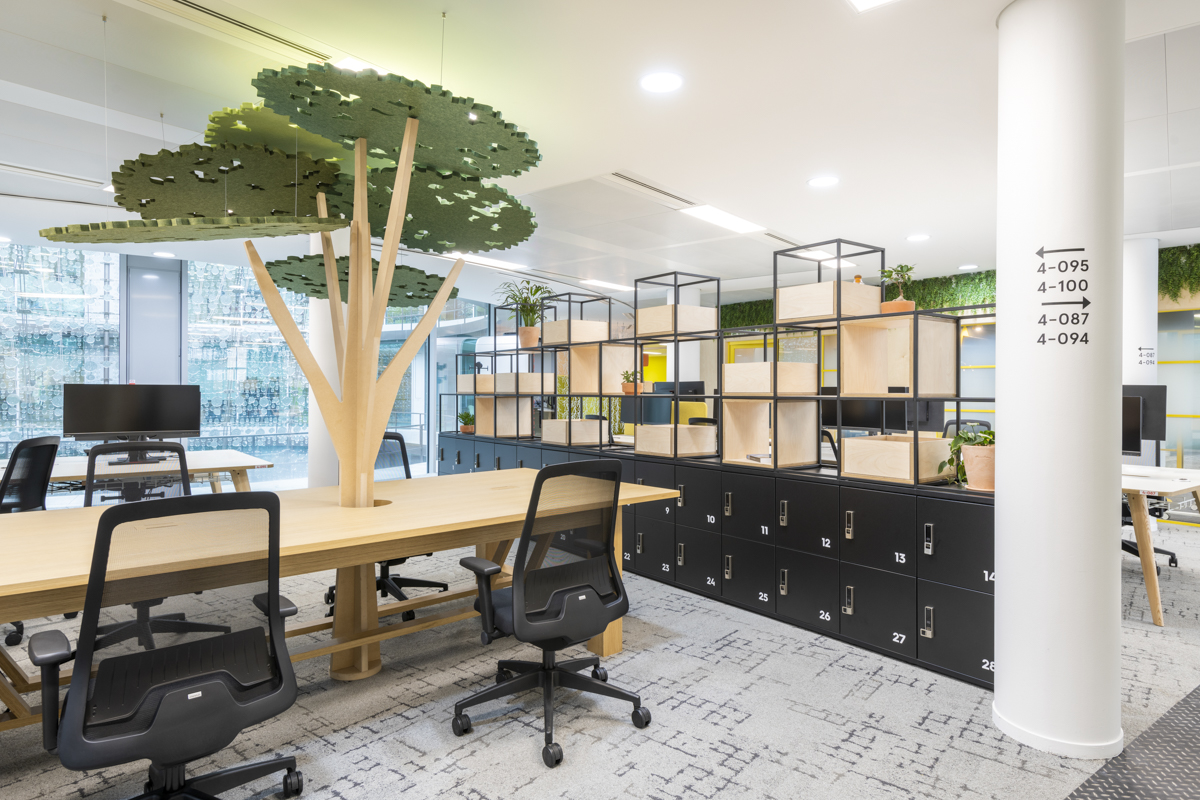 4. Health Impacts of Ergonomic vs. Non-Ergonomic Furniture
4. Health Impacts of Ergonomic vs. Non-Ergonomic Furniture
Numerous studies document the stark contrasts in health outcomes between ergonomic and non-ergonomic office furniture. Key findings include:
- Reduction in Musculoskeletal Disorders: Ergonomic interventions halve the incidence of WMSDs and decrease lost work days by up to 65%, while non-ergonomic furniture contributes to chronic back pain, cervical strain, and repetitive stress injuries.
- Fatigue & Discomfort: Workers in ergonomic setups report 40% less end-of-day fatigue and fewer afternoon “slumps.” Non-ergonomic chairs force muscles to compensate for poor support, leading to quicker exhaustion.
- Long-Term Wellness: Over months and years, employees with ergonomic workstations experience fewer chronic complaints and slower progression of any pre-existing musculoskeletal conditions.
Poor ergonomics is essentially a preventable health hazard—OSHA estimates that WMSDs account for one-third of all workplace injuries and illnesses. Effective ergonomic furniture acts as preventive healthcare, maintaining employees’ musculoskeletal health and reducing both direct medical costs and indirect productivity losses.
 5. Effects on Productivity, Absenteeism, and Employee Satisfaction
5. Effects on Productivity, Absenteeism, and Employee Satisfaction
Beyond health, ergonomic furniture has profound impacts on organizational performance and culture:
- Productivity Gains: Studies show that ergonomic interventions yield average productivity uplifts of 25–40%, by minimising discomfort-related interruptions and enhancing focus and accuracy.
- Reduced Absenteeism & Presenteeism: Companies that improve ergonomics see absenteeism drop by as much as 58%. Ergonomic setups also combat presenteeism—employees working while unwell or in pain—by reducing minor aches that erode daily performance.
- Employee Satisfaction & Retention: Well-designed workspaces signal that an employer values its people, boosting morale and loyalty. Ergonomics improvements have been linked to a 48% reduction in turnover and measurably higher engagement survey scores.
A landmark review of 250 businesses found that ergonomic programs not only cut injury rates by 59% but also reduced lost work days by 75% and increased productivity by 25%. These benefits translate to smoother operations, higher-quality output, and cost savings that extend far beyond the furniture budget.
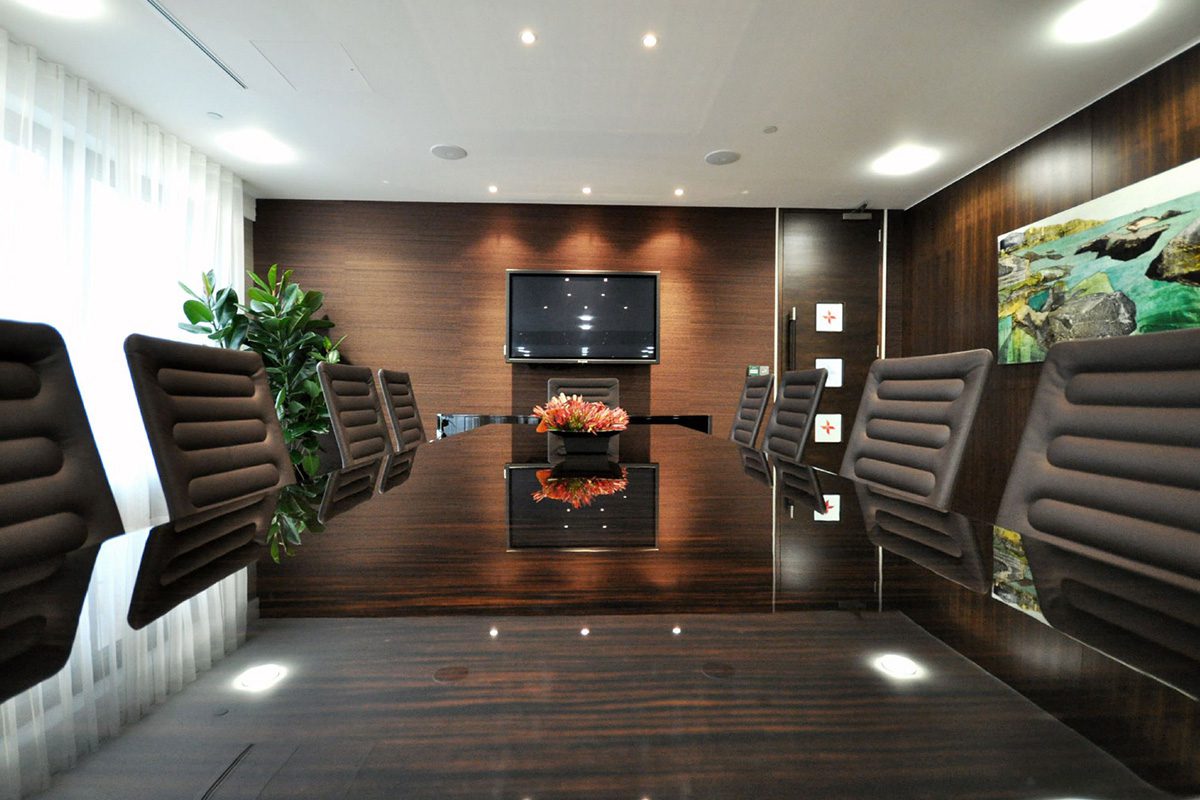 6. Economic Considerations: ROI & Cost-Benefit Analysis
6. Economic Considerations: ROI & Cost-Benefit Analysis
While ergonomic furniture carries higher upfront costs—premium chairs and motorized desks cost more than their basic counterparts—the long-term financial returns are compelling:
- Durability & Lifecycle Value: Quality ergonomics products boast longer warranties and service life, reducing replacement frequency and lowering total cost of ownership.
- Healthcare & Injury Savings: Ergonomic interventions can halve MSD injury rates and cut workers’ compensation claims by 44%. Considering OSHA’s $20 billion annual direct cost for WMSDs, even small injury reductions yield large savings.
- ROI Ratios: Meta-analyses report cost-benefit ratios averaging 1:6 to 1:19 for ergonomics programs. In pure office settings, a conservative 1:1.8 ratio means every £1 spent returns £1.80 in benefits.
- Productivity & Quality Returns: A 5% productivity gain in a 100-employee office generating £50 k per employee equates to £250 k of added value annually, far outstripping a £30 k furniture investment.
- Recruitment & Retention: Ergonomics investments reduce turnover costs, estimated at 20–30% of an employee’s annual salary, and enhance employer branding to attract top talent.
In financial terms, ergonomic furniture is not an expense but an investment in human capital that pays dividends through reduced injuries, lower absenteeism, higher productivity, and improved morale. The real question becomes: “Can you afford not to invest in ergonomics?”
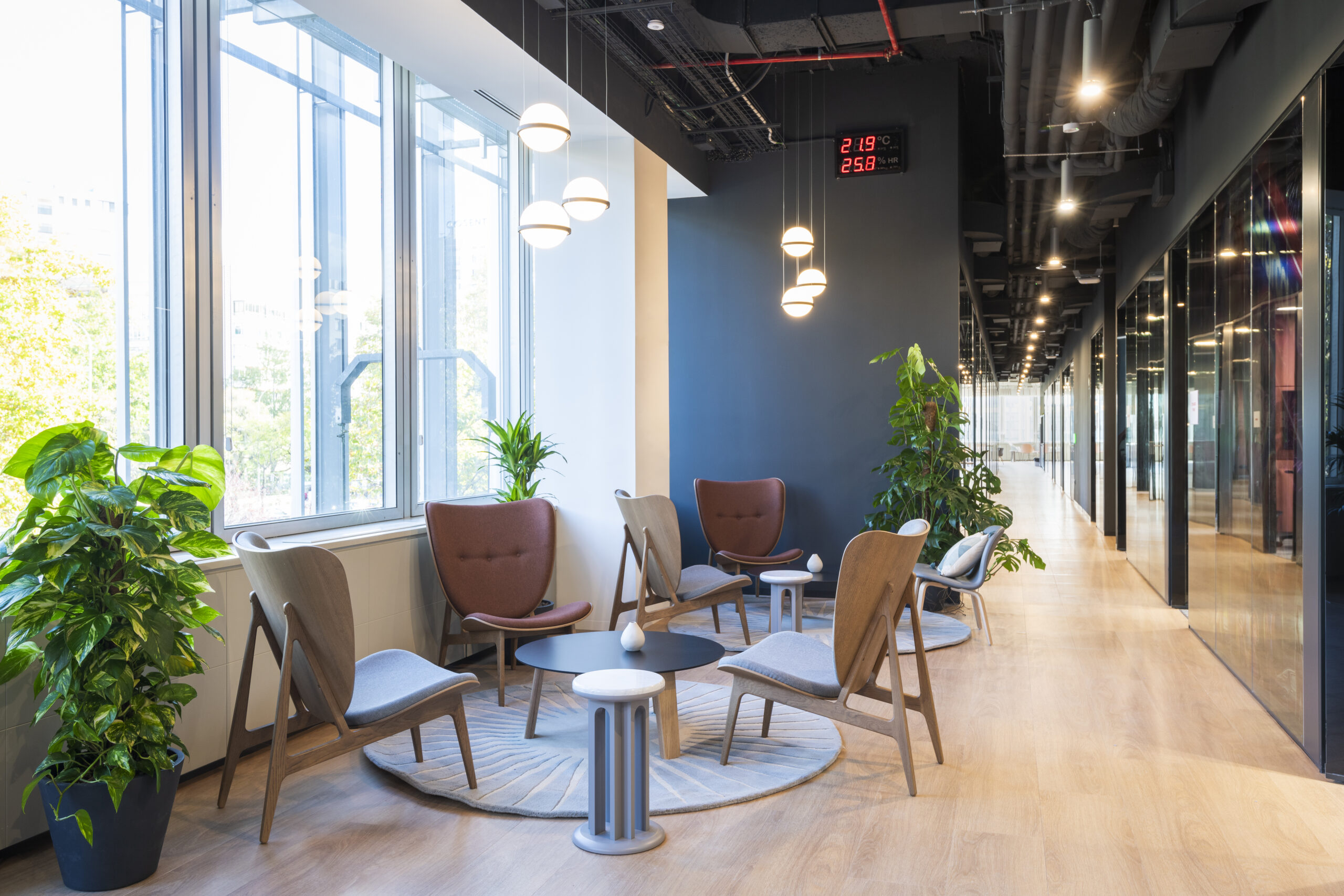 7. Comparison Table: Ergonomic vs. Non-Ergonomic Furniture
7. Comparison Table: Ergonomic vs. Non-Ergonomic Furniture
| Criteria | Ergonomic Furniture | Non-Ergonomic Furniture |
|---|---|---|
| Comfort & Support | Fully adjustable (height, depth, lumbar), sustaining comfort over long hours. | Limited or no adjustability, leading to pressure points and discomfort. |
| Health Outcomes | Reduces WMSDs, back pain, neck strain; supports neutral posture. | Increases risk of chronic pain and repetitive strain injuries. |
| Upfront Cost | Higher initial investment—premium materials and mechanisms. | Lower purchase price with simpler construction. |
| Durability | Long-lasting, often with multi-year warranties. | Prone to wear and earlier replacement, raising total cost. |
| Productivity Impact | Boosts focus and efficiency—15–25% gains reported. | Distractions from discomfort reduce effective work time. |
8. Next Steps
Ergonomics in office furniture is more than a luxury—it is a strategic imperative for modern companies. By designing the workplace to fit the worker, companies can minimise injuries and discomfort, unlocking higher productivity, lower absenteeism, and improved job satisfaction. Today’s trends—from sit-stand desks and adaptive seating to AI-powered smart furniture—offer powerful new tools to support employee health in real time.
For workplace decision-makers, the path forward is clear:
- Assess Current Conditions: Conduct quantitative measurements and employee surveys to identify pain points.
- Prioritise Quick Wins: Introduce adjustable chairs and monitor arms, complemented by training on proper use.
- Plan Strategic Upgrades: Invest in sit-stand desks, active seating zones, and smart ergonomics for long-term gains.
- Measure & Iterate: Track health metrics, productivity data, and satisfaction scores to refine your program.
- Foster a Culture of Well-being: Combine furniture investments with movement breaks, ergonomic policies, and ongoing education.
Ergonomic furniture represents an investment in your most valuable asset—your people. The evidence is unequivocal: every £1 spent on ergonomics returns significant benefits through reduced healthcare costs, fewer lost workdays, higher productivity, and improved retention. In a competitive talent market, offering a comfortable, health-focused workspace also strengthens your employer brand. Ultimately, ergonomics is a win-win: employees enjoy greater well-being, and organisations reap measurable performance gains.
If you have questions about implementing an ergonomic strategy or selecting furniture that fits your needs, our workplace experts are here to provide tailored guidance and assessments.

